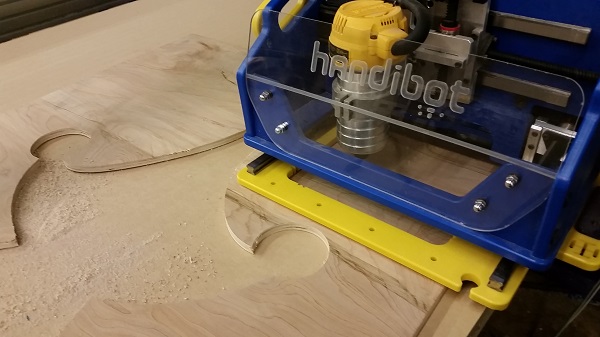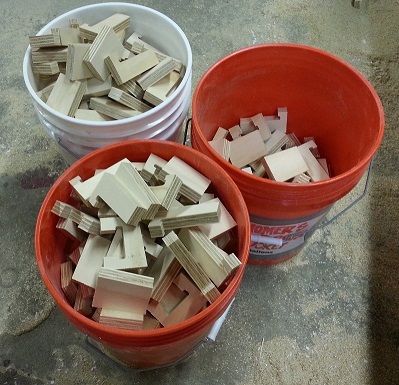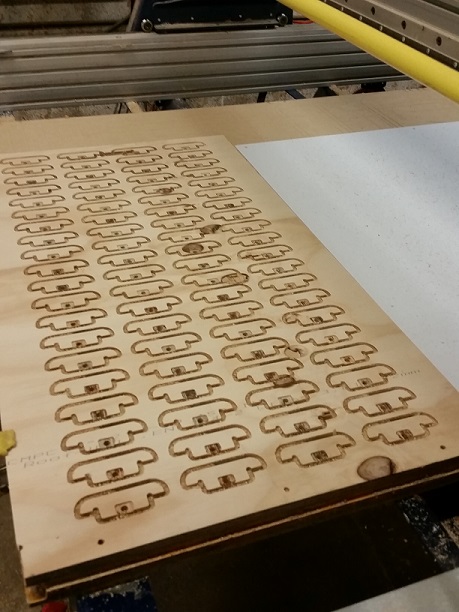
Whether you’re a production manufacturer using CNC machines, a cabinet shop cutting panels with a table saw, or a garage hobbyist working on weekends, even the most efficient cutting tools and powerful design sofware don’t let us utilize every square inch of every sheet of material we cut. This often makes us feel wasteful and not only causes bad “environmental karma,” but also has economic repercussions. We’re throwing away useable material, which equals throwing away $$$$.
We all have techniques to minimize how much material ends up in the trash. We try to design for material efficiency, which is wonderful most of the time. But sometimes, those design decisions can have a couple of undesirable side effects. We make things larger or smaller than we really think they should be, just because we have material on the sheet available. This might not always hurt the overall design, but sometimes it does. Or we fill the rest of the sheet with parts we MIGHT need someday, and end up with buckets of spare parts to store. We might end up using them, but we might also make a change to that design, rendering them obsolete. Cutting lots of small pieces on a sheet also uses up valuable machine time on a large machine, time that could be used more efficiently.
In most cases we cut our parts and then trim our waste material into regularly-shaped blanks and store them for future use. Most of the time that means we spend time cutting off odd corners and lumpy sections with a saw and then stack them in the corner of the shop with the dozens (maybe hundreds???) of other oddly proportioned and oddly sized pieces. If we’re lucky, we eventually find something to do with those blanks, create a custom toolpath, and cut parts out of it.
Maybe there’s another option: Distributed manufacturing as waste management!
There are businesses that need large quantities of small parts that can be cut from sheet goods: wheels or gears for toys, spacers for packaging, acrylic covers for inspection electronics projects, etc. What if we could connect those businesses with fabrication shops that could cut those parts from their waste? Material would be used that would normally end up in the landfill so the per-part price could be cheaper… and the material cost is essentially zero!
The “consumer” business could post their product needs with details like the size and description of the parts, the materials they can use, the quantity they need, and any time constraints. They would be connected to “supplier” businesses that could cut those parts from the waste materials left over from their primary cutting jobs.
The suppliers could cut these parts on their production tools, maybe out of material that they’ve saved using the “trim and store” method, but that ties up time on their larger production machine and requires thought and skilled labor to figure out how to hold and toolpath irregular sized blanks.

A Handibot® Smart Power Tool can solve a lot of these problems. Since it can be placed anywhere on the material, no trimming is necessary – just find a large enough spot on the waste material. Place the Handibot in this free space and start cutting. Files could be supplied that were optimized for the Handibot’s 6”x8” cutting area, so that all the operator would have to do is to run the selected file. Processing can be done immediately after primary cutting is finished by semi-skilled labor, creating entry level jobs that give an easy introduction to CNC technology.
Manufacturers needing parts for existing products is certainly one market, but environmentally conscious designers could create projects with parts in the Handibot 6”x8” format. These may be one-piece projects or multi-part projects that are assembled in interesting ways. And a Handibot in a recycling center could be used for contract cutting of wood, plastics, cardboard, etc. from waste materials that have been collected. The skills are easily taught so that these cutting jobs could be done by unskilled labor.

